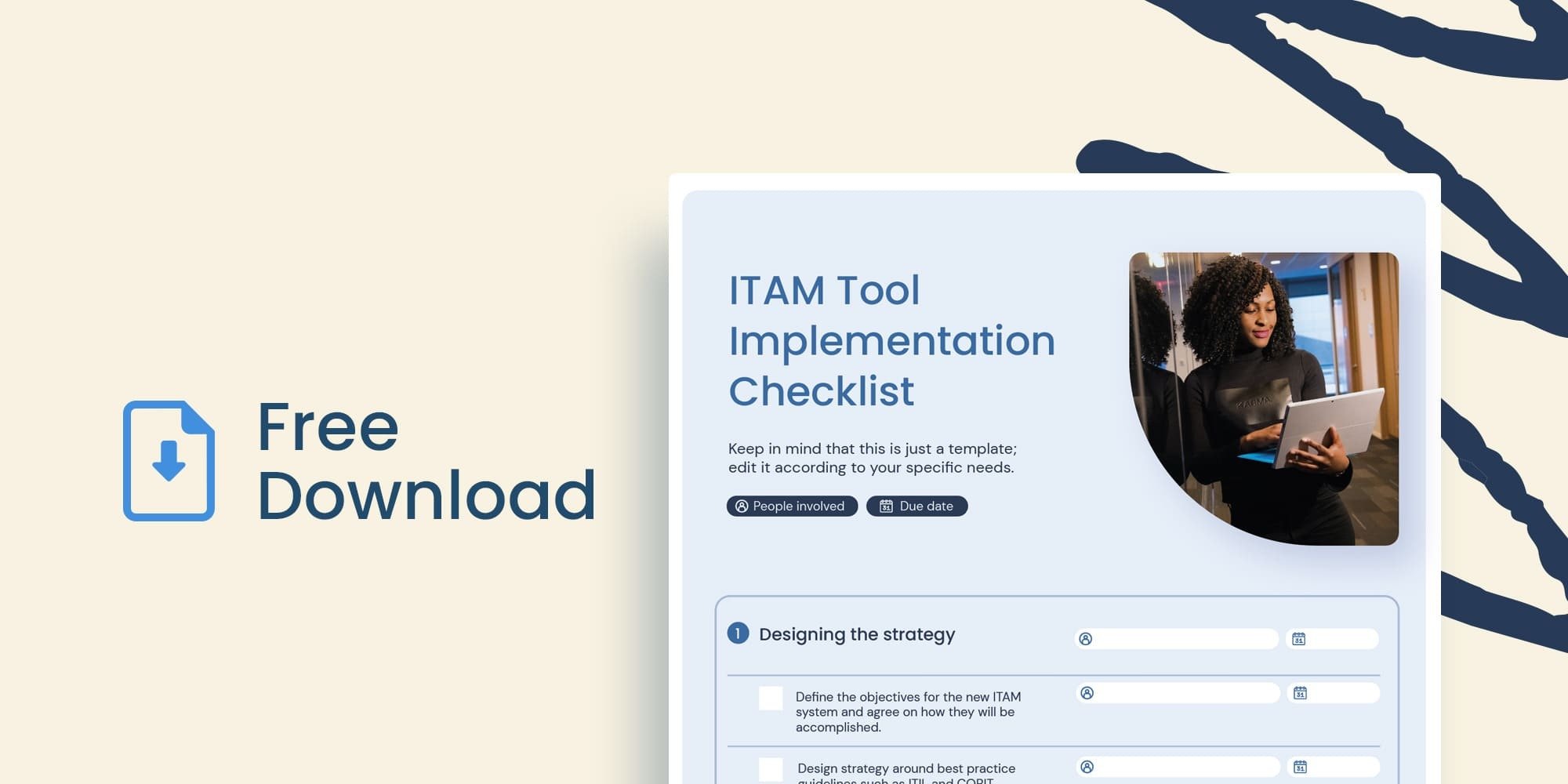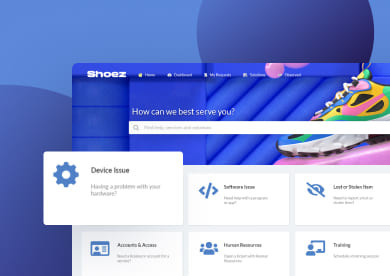Fixed Asset Management software helps organizations track, maintain, and account for their long-term assets throughout their lifecycle. By centralizing asset data, automating depreciation, and simplifying audits, it gives teams the visibility they need to stay compliant and make smarter financial decisions.
In this article, we’ll explore what Fixed Asset Management software does, its core capabilities, how to choose the right tool, and the most recognized solutions in 2025 to help your organization manage assets more efficiently and cost-effectively.
What is Fixed Asset Management software?
Fixed Asset Management software is a specialized digital solution designed to help organizations efficiently track, manage, maintain, and account for their long-term assets.
These tools often include capabilities to monitor asset inventory, schedule preventive maintenance, track depreciation, and manage the entire asset lifecycle (from acquisition to disposal).
Typically used by Finance, Accounting, Operations, and Facilities teams, its main goal is to maximize the value of investments while minimizing costs through better visibility, automation, and control.
What qualifies as a fixed asset?
Fixed assets are long-term tangible resources that a company uses to generate revenue and doesn’t intend to sell within a year. They usually include equipment, vehicles, buildings, and furniture, but can also cover IT hardware and other capitalized assets.
These items appear on the balance sheet and are subject to depreciation over time, which reflects their gradual loss of value. Because of that, accurately tracking and managing them is essential for financial reporting and compliance — the exact purpose of Fixed Asset Management software.
Fixed Asset Management software core capabilities
Not every Fixed Asset Management tool checks all the boxes, but some features are simply non-negotiable. These are the core capabilities you should look for when choosing a solution:
- Centralized asset register and classification - Keeps a complete record of all fixed assets in one place, including location, category, cost center, and custodian information. This allows teams to easily identify, classify, and control each asset.
- Asset tagging and physical verification - Supports barcode, QR code, or RFID tagging to simplify asset identification and reduce manual errors. Mobile scanning enables real-time physical audits and verification.
- Asset Lifecycle Management - Tracks every stage of the asset’s life (acquisition, transfer, revaluation, maintenance, and disposal) ensuring accurate records and timely actions.
- Depreciation and Valuation Management - Automates depreciation calculations using multiple accounting standards (GAAP, IFRS, or tax rules). Also supports revaluation and impairment tracking for accurate financial reporting.
- Maintenance and work order scheduling - Integrates maintenance planning to extend asset lifespan, minimize downtime, and control repair costs. This often includes preventive maintenance alerts and work order tracking.
- Audit trail, compliance, and controls - Maintains a detailed history of asset movements, changes, and ownership to support internal audits, financial reconciliation, and regulatory compliance.
- Reporting, analytics, and exports - Delivers detailed reports and dashboards on utilization, depreciation, total cost of ownership (TCO), and ROI. Enables data exports to subledgers or accounting systems for reconciliation.
- Integrations with enterprise systems - Connects seamlessly with ERP, GL, procurement, and CMMS tools to sync financial and operational data, ensuring consistent and up-to-date information across platforms.
How to choose a Fixed Asset Management tool (5 steps)
Most guides will tell you to compare features, pricing, and customer reviews — and while that’s useful, it doesn’t always help you understand how the software will perform in your organization.
That’s why we’ve chosen a more hands-on and process-oriented approach. These five steps are designed to help you evaluate how well a Fixed Asset Management solution fits into your existing workflows, financial requirements, and audit practices.
#1. Define accounting requirements and depreciation rules
Start by aligning the tool with your accounting standards, depreciation methods (GAAP, IFRS, or local rules), and asset categories. This ensures your reports and tax filings will match your financial statements from day one.

#2. Map integrations with ERP and procurement
Your asset data shouldn’t live in isolation. Identify how the tool will connect with ERP, procurement, and general ledger systems to keep acquisition costs, capitalization, and depreciation fully synchronized.
#3. Plan tagging and physical verification cadence
Define how assets will be tagged (QR, barcode, or RFID) and how often they’ll be verified. Setting a clear verification cadence prevents data drift and keeps your inventory accurate over time.
#4. Validate reporting and audit needs with Finance
Collaborate with Finance and Audit teams to confirm that the system’s reports meet your compliance and reconciliation requirements. It’s easier to adjust configurations before rollout than after an audit notice.
#5. Run a pilot with real assets and close-the-books scenarios
Before committing, test the system using real data and simulate a full accounting cycle. A successful pilot will reveal whether the tool fits your workflows, timelines, and accuracy expectations.
Implementation checklist and best practices
Most Fixed Asset Management implementations fail not because of the software itself, but because of weak data foundations, undefined controls, or misaligned accounting structures.
That’s why this checklist focuses on practical and control-oriented best practices — the kind that keep your system clean, auditable, and ready for month-end closes.
1. Clean starting data and chart of accounts alignment
Before migration, consolidate all existing asset records, remove duplicates, and align every item with the correct account codes, cost centers, and categories. A clean dataset ensures your system reconciles seamlessly with the general ledger.
2. Tagging standards and inventory frequency
Define a consistent tagging system (QR, barcode, or RFID) and establish how often physical verifications will be performed. A standardized cadence prevents data drift and builds trust in your asset register.
3. User roles, approvals, and separation of duties
Set clear user permissions and approval flows to prevent unauthorized edits or conflicts of interest. For example, the person who records an acquisition shouldn’t be the same person approving its disposal.
4. Month-end close workflow and reconciliations
Document the full month-end workflow, including depreciation runs, revaluation entries, and reconciliation procedures with accounting. This step ensures your financial reporting remains consistent and audit-ready.
5. Controls for acquisitions, transfers, and disposals
Implement approval checkpoints and supporting documentation for all key asset movements. These controls help maintain compliance, improve traceability, and protect your organization against data or financial discrepancies.

Fixed Asset Management tools overview
Before diving into the list, it’s worth noting how we selected these tools. Our research is based on official vendor information (product documentation, feature lists, and pricing details) to ensure the content is accurate and reliable. The goal is to help you evaluate the options and choose the one that best fits your organization’s needs.
While InvGate is not a dedicated Fixed Asset Management software vendor, we do offer solutions in adjacent categories, such as IT Asset Management (ITAM) and IT Service Management (ITSM). These platforms share similar capabilities (like lifecycle tracking, depreciation, and integrations) but are designed with a broader scope across IT and enterprise assets.
With that in mind, here are some of the most recognized tools for Fixed Asset Management, based on information available as of October 2025.
#1. Sage Fixed Assets
 According to its official product documentation, Sage® Fixed Assets is a dedicated platform for managing the entire lifecycle of fixed assets (from acquisition to disposal). It combines accounting, tracking, and reporting capabilities to help organizations improve accuracy, reduce risk, and stay compliant with GAAP and IFRS standards.
According to its official product documentation, Sage® Fixed Assets is a dedicated platform for managing the entire lifecycle of fixed assets (from acquisition to disposal). It combines accounting, tracking, and reporting capabilities to help organizations improve accuracy, reduce risk, and stay compliant with GAAP and IFRS standards.
The solution is available both on-premises and cloud-hosted, giving users the flexibility to deploy it locally or through a hosting partner such as WebHouse, powered by AWS and Cisco technology. This makes it accessible from anywhere while maintaining high data security standards.
Sage Fixed Assets key features
Sage Fixed Assets is organized into four main modules, each addressing a specific aspect of fixed asset management:
- Depreciation – Automates depreciation calculations with more than 50 methods, manages multiple books (up to 20), and supports bulk editing of depreciation lives and methods.
- Planning – Helps track project costs before they become fixed assets, compare actual vs. budgeted expenses, and transfer completed assets seamlessly to the depreciation module to avoid duplicate entries.
- Tracking – Provides automated inventory reconciliation and barcode-based tracking. Users can print or scan barcodes, check assets in and out to employees, and update records in real time from mobile devices.
- Reporting – Offers customizable reports and charts, allowing users to add or remove fields, change layouts, and export data for audits or financial reviews.
Sage Fixed Assets ratings
The following ratings were reported by the main software review platforms in October 2025:
- Gartner Peer Insights: Not enough information available.
- G2: 4.2 out of 5 stars.
- Capterra: 4.3 out of 5 stars.
Sage Fixed Assets pricing
Sage does not publicly list pricing for its Fixed Assets suite. Interested organizations can request a demo or a personalized quote through the official website.
#2. Oracle NetSuite Fixed Assets Management
 As per its official product pages, NetSuite® Fixed Assets Management (FAM) is a module within the broader NetSuite ERP cloud platform, developed by Oracle Corporation.
As per its official product pages, NetSuite® Fixed Assets Management (FAM) is a module within the broader NetSuite ERP cloud platform, developed by Oracle Corporation.
The module automates fixed asset depreciation and lease accounting, and supports the full asset lifecycle (from acquisition through disposal) eliminating many spreadsheet-based manual processes. Because FAM is embedded in the NetSuite ERP ecosystem, it benefits from native integration with procurement, financials, and global accounting capabilities.
Oracle NetSuite Fixed Assets Management key features
NetSuite FAM offers a set of capabilities explicitly tailored for long-term Asset Management:
- Asset tracking: Maintains detailed records of depreciating and non-depreciating assets, with full history for transfers across subsidiaries or departments.
- Depreciation: Automates calculations using standard or custom schedules and supports usage-based methods to pause depreciation during downtime.
- Lease accounting: Ensures compliance by capturing key lease details, amortizing costs, and automating journal entries for lease and interest expenses.
- Reporting: Produces accurate financial statements and allows deeper analysis with SuiteAnalytics across regions or subsidiaries.
Oracle NetSuite Fixed Assets Management pricing
NetSuite FAM is an add-on module to the NetSuite ERP platform. As noted on the product site:
“Users subscribe to NetSuite for an annual license fee. Your license is made up of three main components: core platform, optional modules and the number of users. There is also a one-time implementation fee for initial setup. … NetSuite Fixed Assets Management is available as an add-on module.”
Oracle NetSuite Fixed Assets Management ratings
These ratings reflect the scores reported by the main software review platforms as of October 2025.
- Gartner Peer Insights (in Cloud ERP for Product-Centric Enterprises): 4.1 out of 5 stars
- G2: 4.1 out of 5 stars.
- Capterra: 4.5 out of 5 stars.
#3. UpKeep
 According to Software Advice, UpKeep® is a web-based CMMS offering a mobile-first solution for maintenance and operations teams.
According to Software Advice, UpKeep® is a web-based CMMS offering a mobile-first solution for maintenance and operations teams.
As noted by Gartner Peer Insights, it’s mobile-first and designed for a dispersed workforce, giving maintenance teams one place to manage inventory, work orders, and budgets while enabling technicians to access immediate self-help wherever they work.
UpKeep key features
According to UpKeep’s official website, its mobile Asset Management system includes:
- Asset tracking.
- Maintenance scheduling.
- Depreciation calculation.
- Barcode/QR scanning.
- Reporting and analytics.
- Compliance tracking.
- User access control.
- Integration capabilities.
UpKeep pricing
According to its pricing page, UpKeep’s Maintenance plans start at USD 20 per user/month for the Essential tier, which includes asset tracking, custom tasks, and 24/7 support.
The Premium plan costs USD 55 per user/month and adds preventive maintenance optimization and inventory costing.
Professional and Enterprise tiers include workflow automation, advanced analytics, and API access, with pricing available upon request.
UpKeep ratings
The following ratings were reported by the main software review platforms in October 2025:
- Gartner Peer Insights: 4.5 out of 5 stars.
- G2: 4.5 out of 5 stars.
- SoftwareAdvice (UpKeep overall) – 4.6 out of 5 stars.
Disclaimer: All product names, logos, and brands are property of their respective owners. All company, product, and service names used on this site are for identification purposes only. Use of these names, trademarks, and brands does not imply endorsement. Comparisons are based on publicly available information as of October, 2025 and are provided for informational purposes only.















